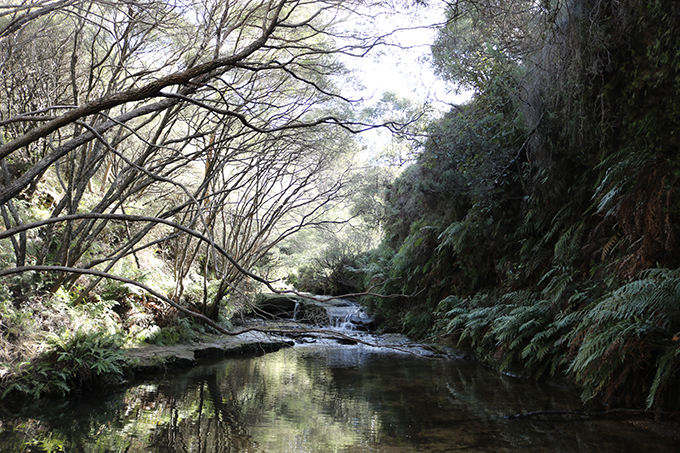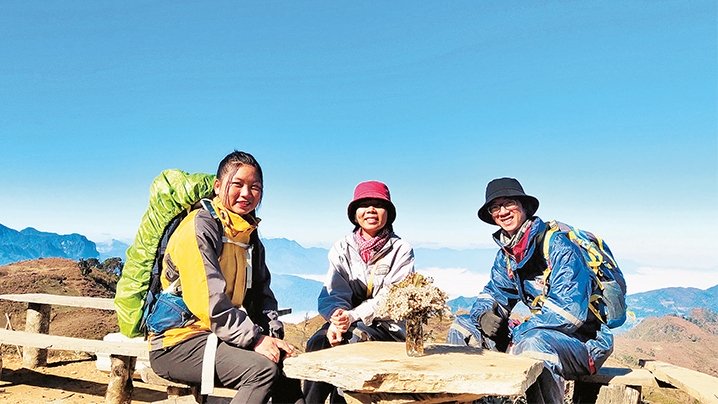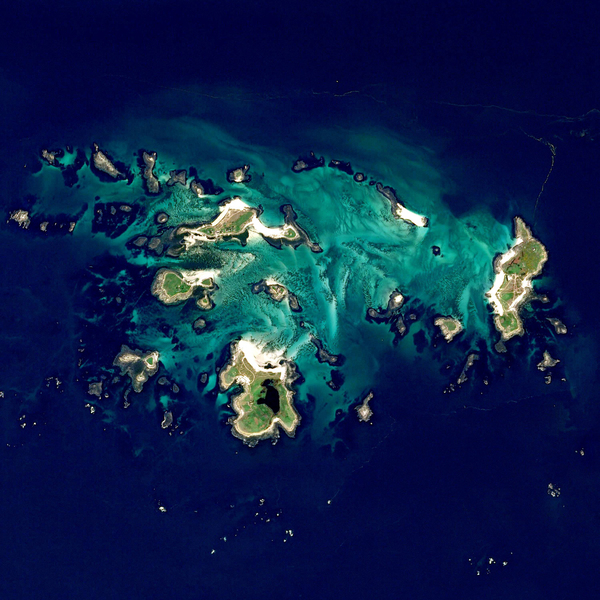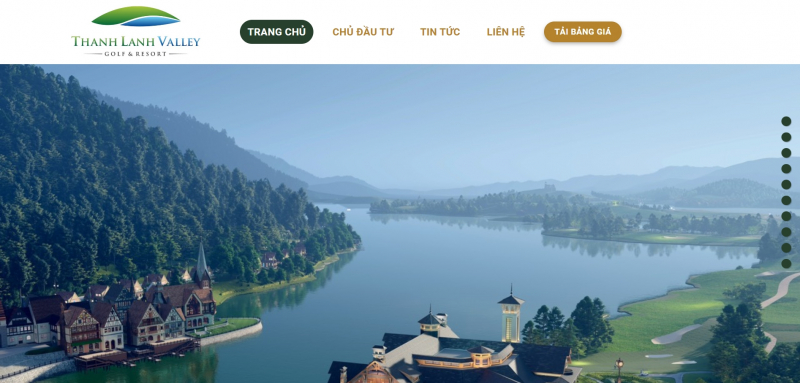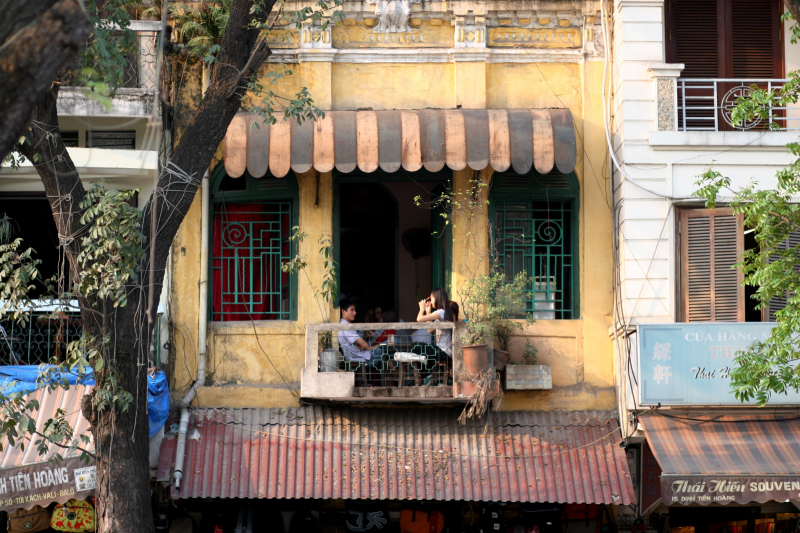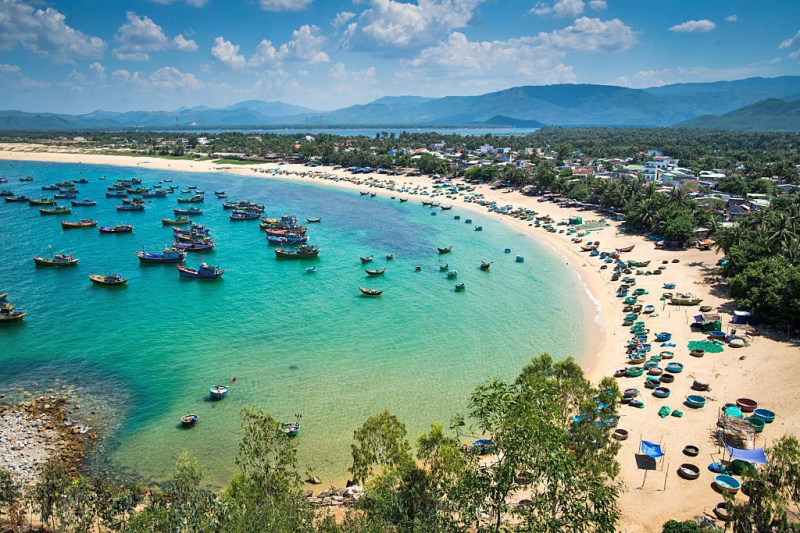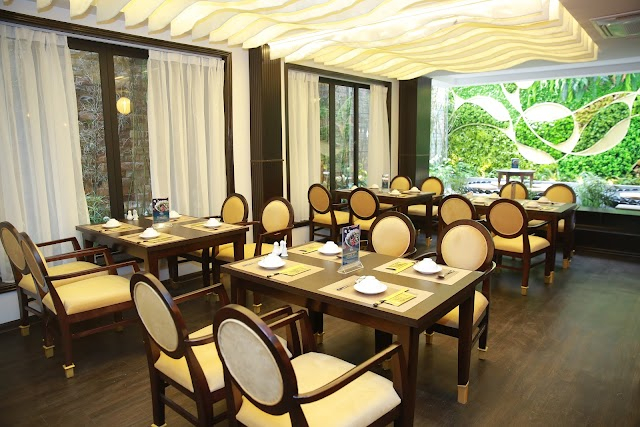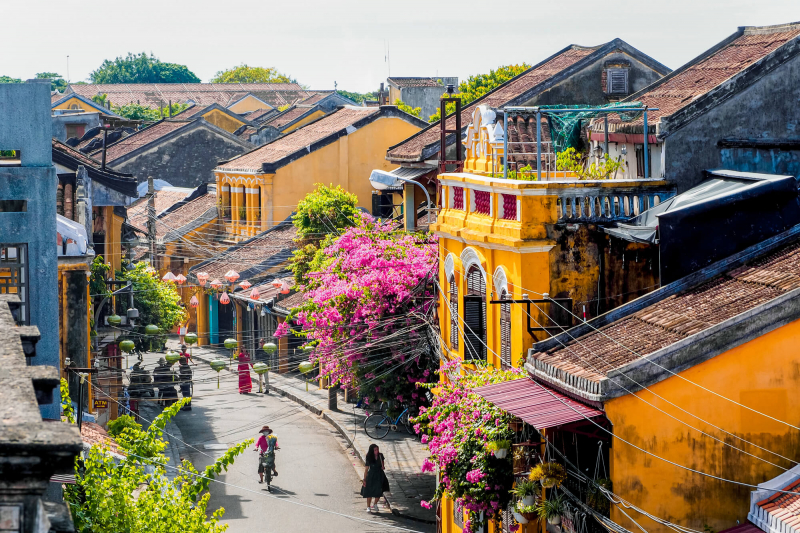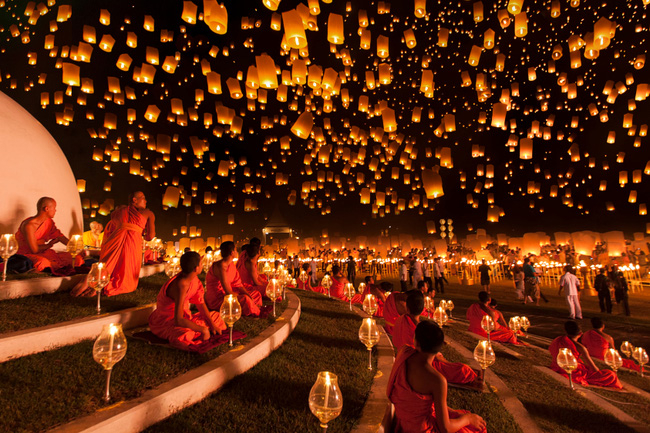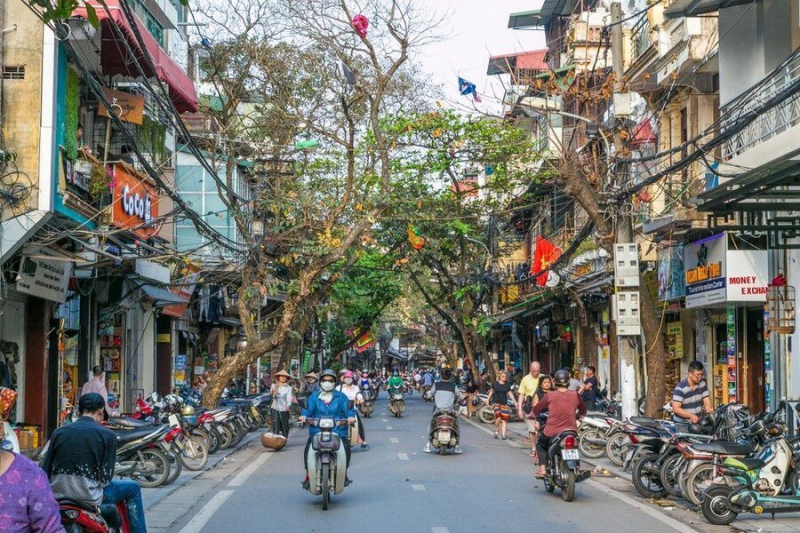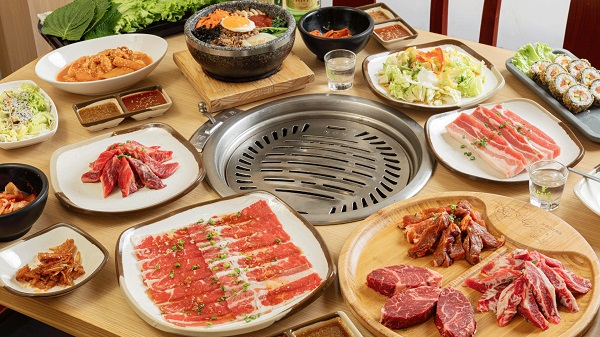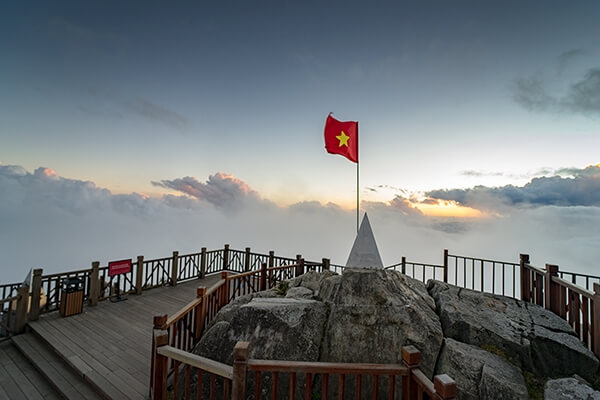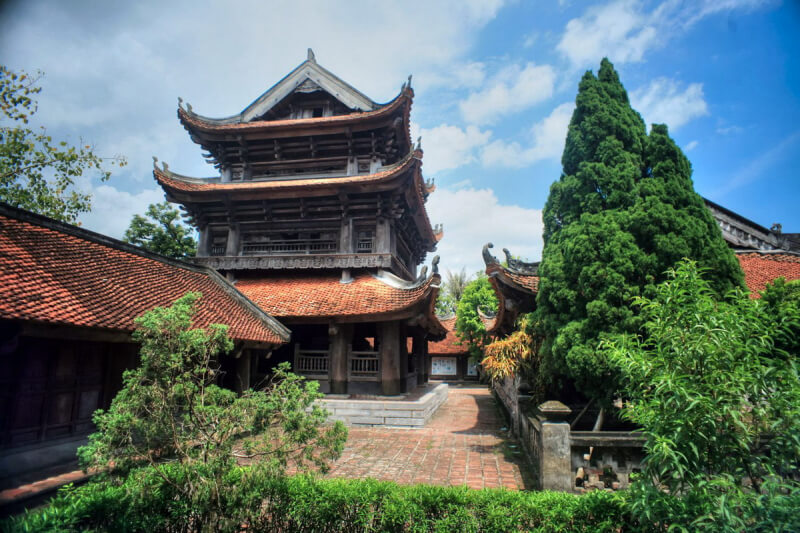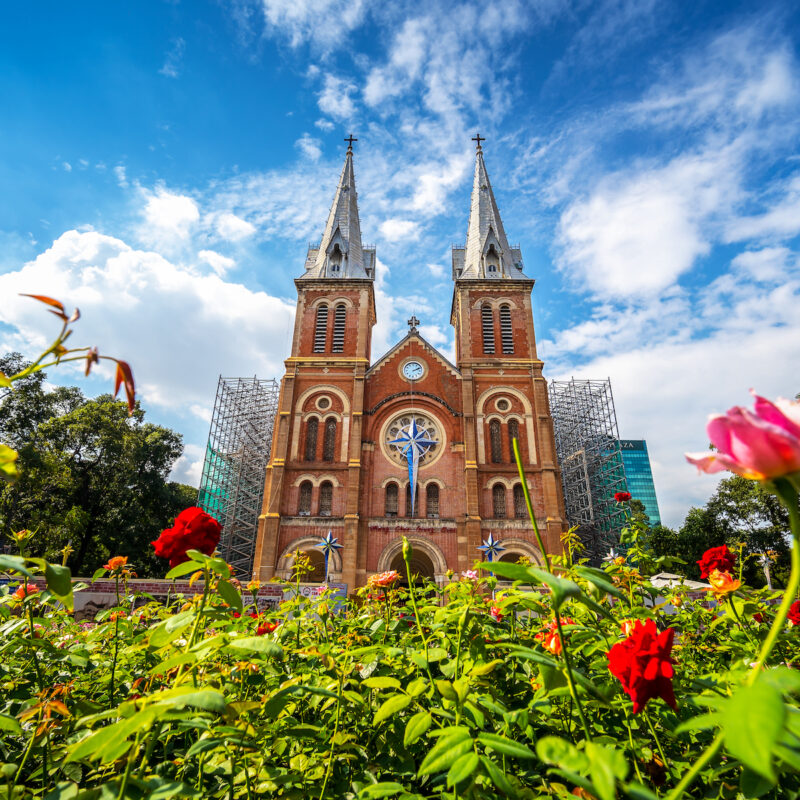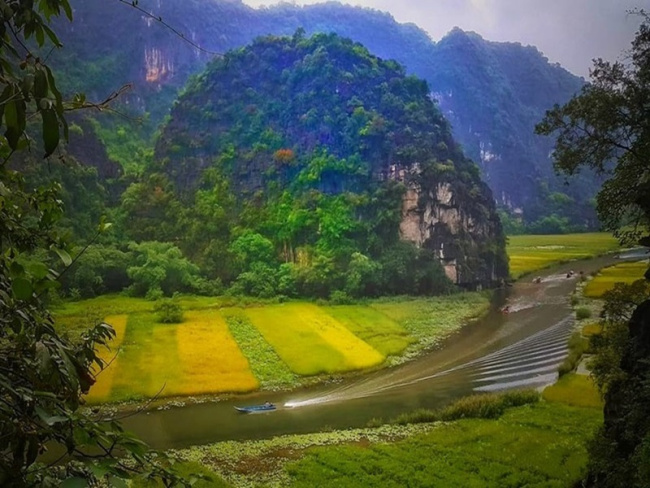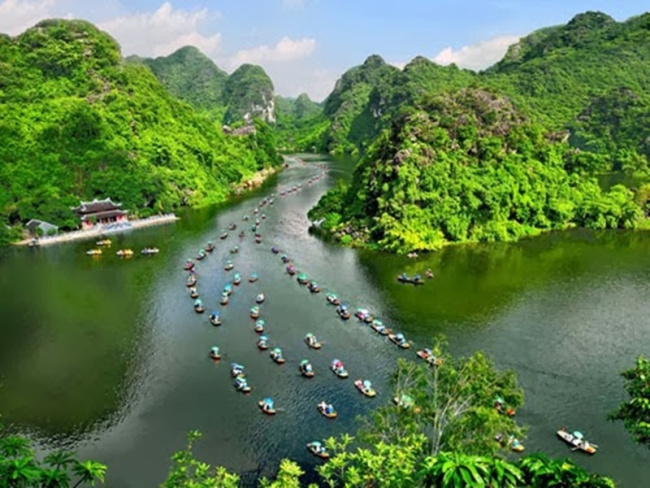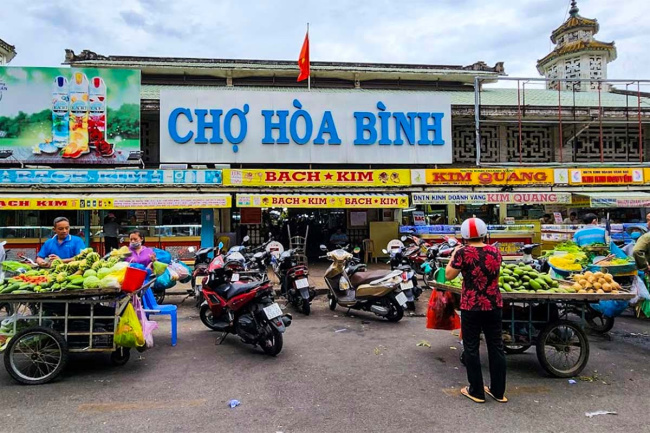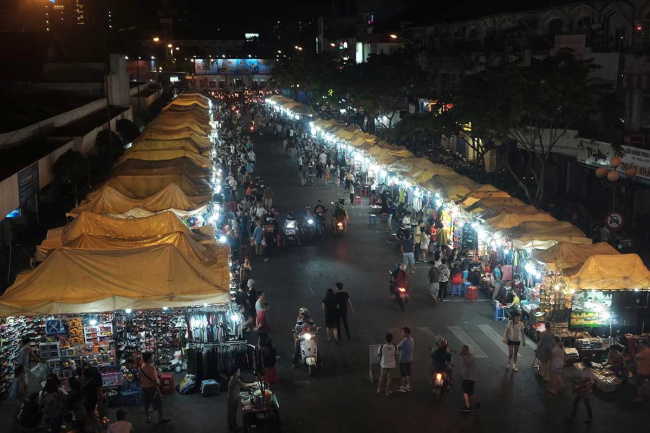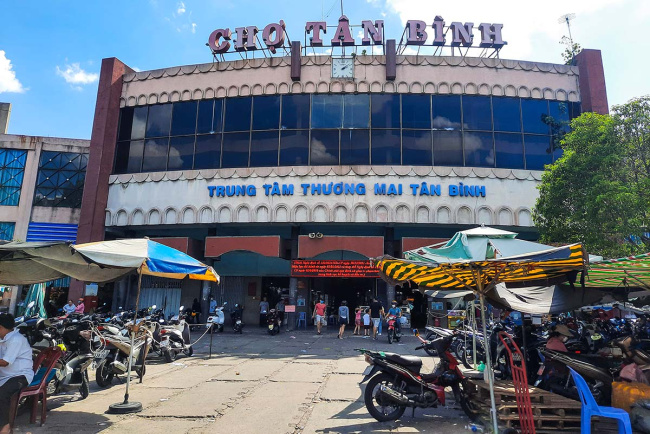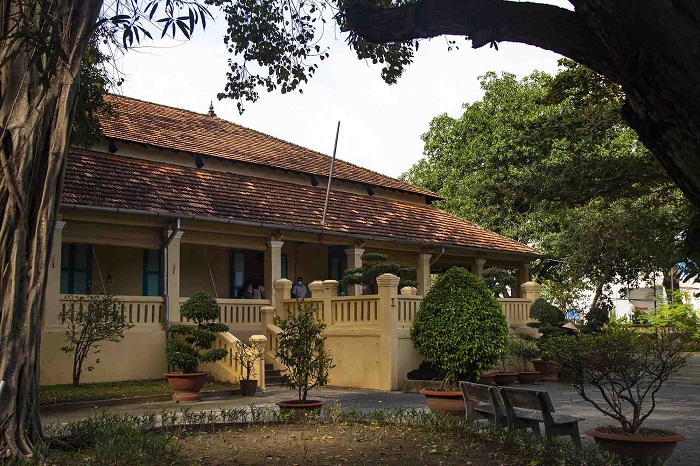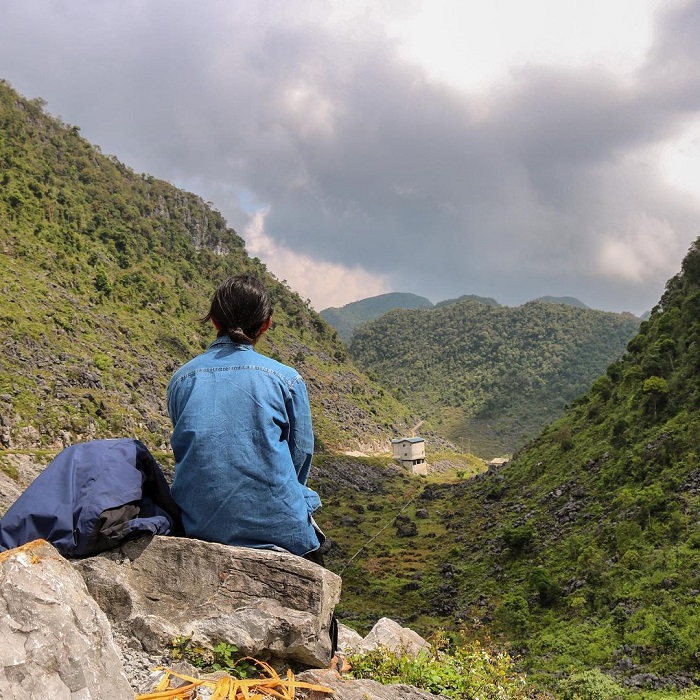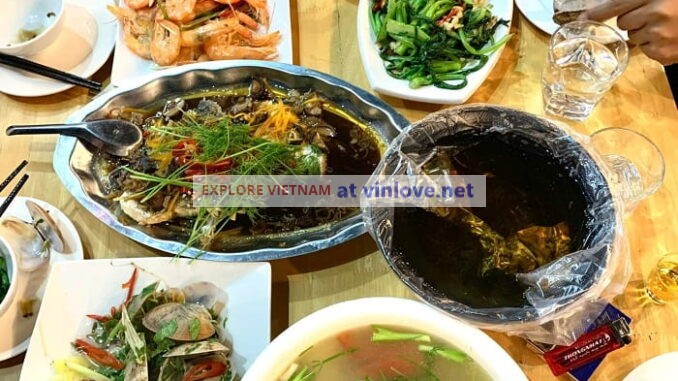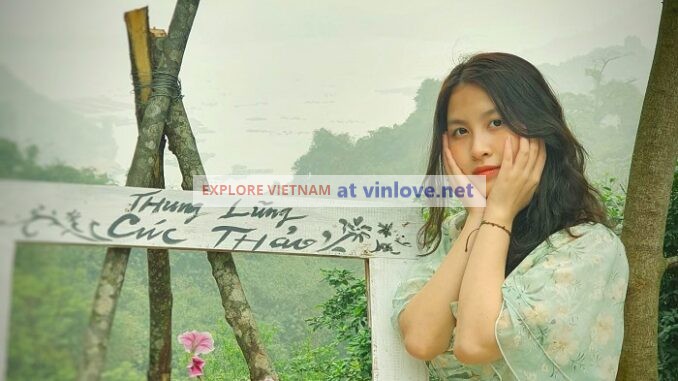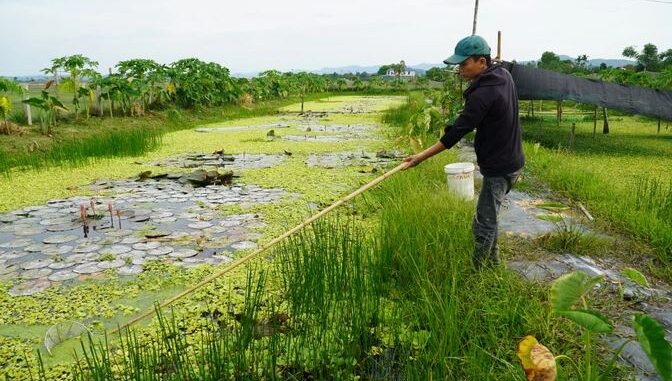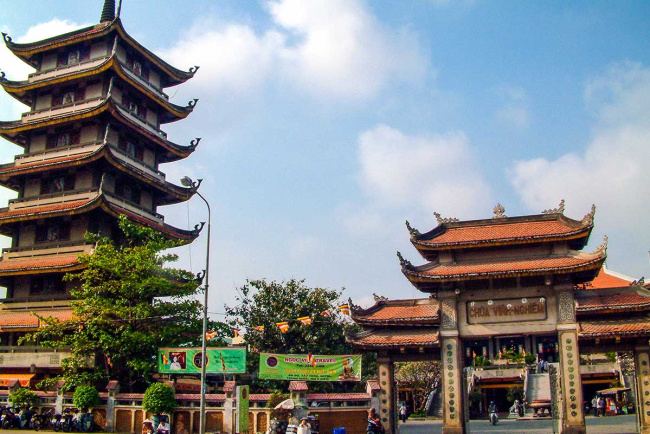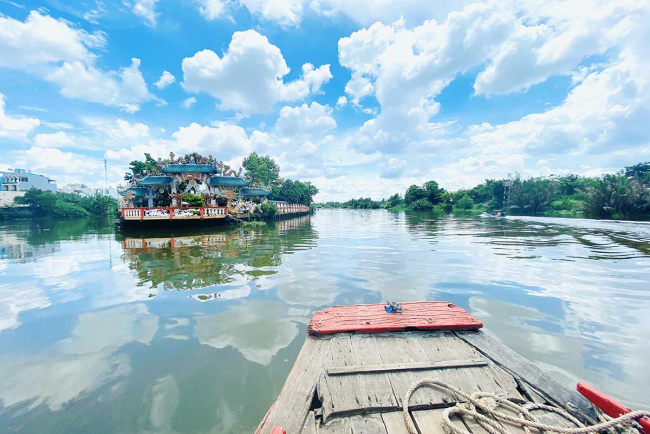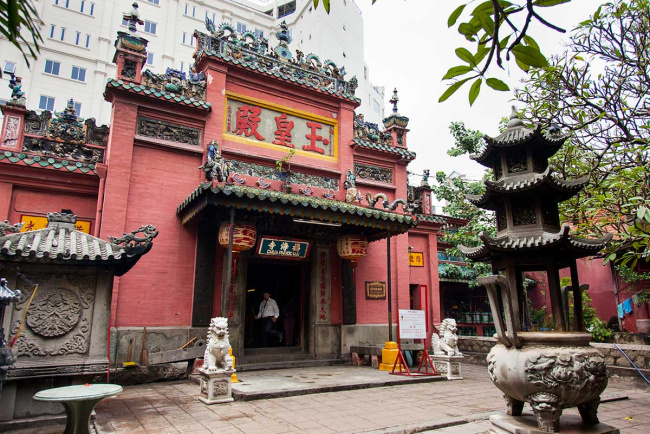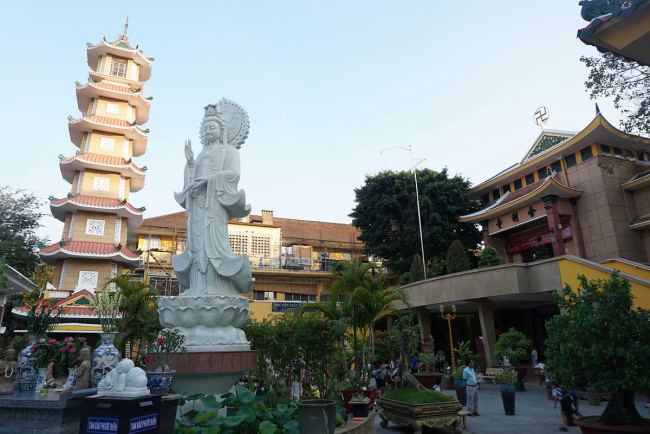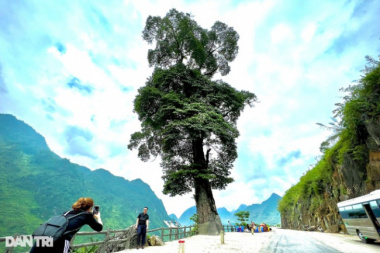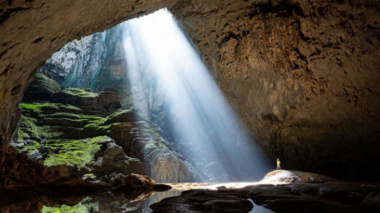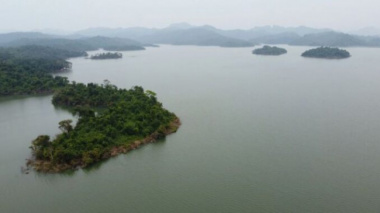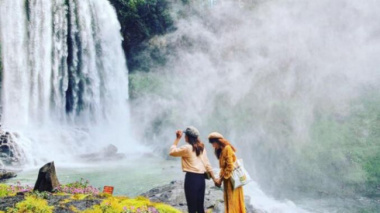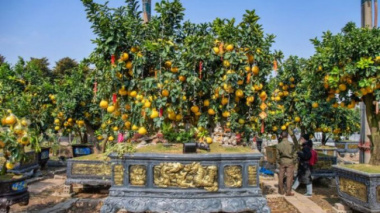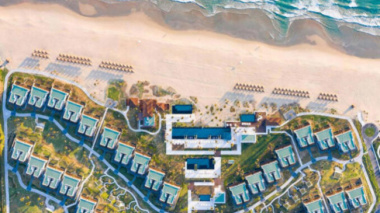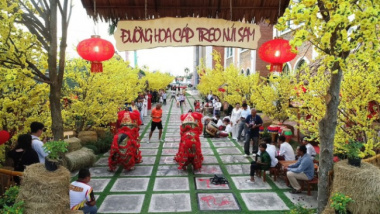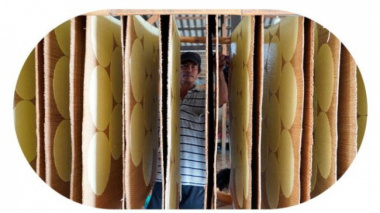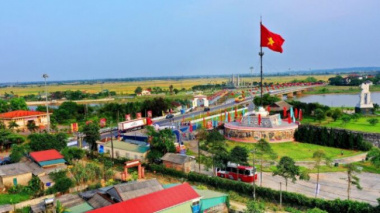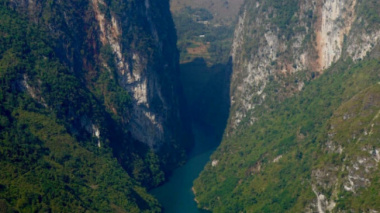Marble Mountains – near Da Nang
The Marble Mountains aren’t the tallest or most famous mountains in Vietnam, but when you consider how they shoot up precipitously from the otherwise flat coastal plain, it’s no surprise that they would be considered something of an attraction. Add to that an intriguing history and stunning views, and the appeal is quite obvious.
History

Ngu Hanh Son District. Photo: Jesus Abizanda
Vietnam has an impressive collection of mountains, from the Hoang Lien Son to the Annamese Range, misty green alpine scenes are familiar throughout nearly the entire country. But just outside the city of Da Nang, right about at the halfway point of the country, a cluster of five mountains has become a burgeoning tourist destination, mostly because they don’t seem to belong there.
Jutting incongruously from the surrounding plains, the Marble Mountain’s location makes them an easy destination for anyone staying in the city, or as a stopover when visiting Hoi An.
The earliest known history of the Marble Mountains dates back to the Cham Empire, which initially considered its caves and tunnels as holy sites. Over the ensuing centuries, numerous Buddhist shrines and temples were added in its caves and atop its peaks.
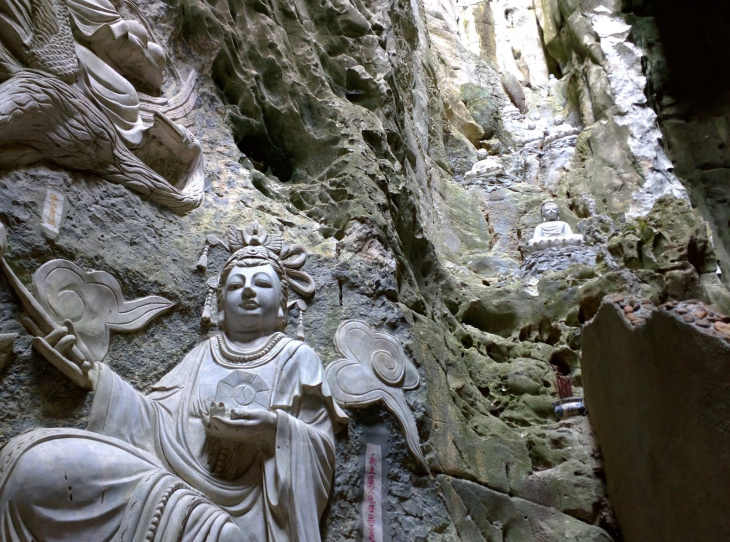
Marble carvings. Photo: Andrew Magill
It wasn’t until 1825 that the individual mountains were given their current names, which references the five essential elements: Tho (earth), Moc (wood), Kim (metal), Hoa (fire), and Thuy (water). Later, French geologists discovered the mountain’s marble composition, thus dubbing them the Marble Mountains.
During the war that ousted the French, and later during the Vietnamese conflict, the mountains were repeatedly used as a refuge site. Despite there being an American airbase right on their doorstep, the Vietcong used the network of tunnels and caves to establish a secret field hospital to tend to their wounded and spy on the American forces at nearby China Beach.
These days, the mountains have returned to being an oasis of peace, tourists notwithstanding. An effort has also been made to end the quarrying of the aforementioned marble, which was long prized by local carvers.
Features
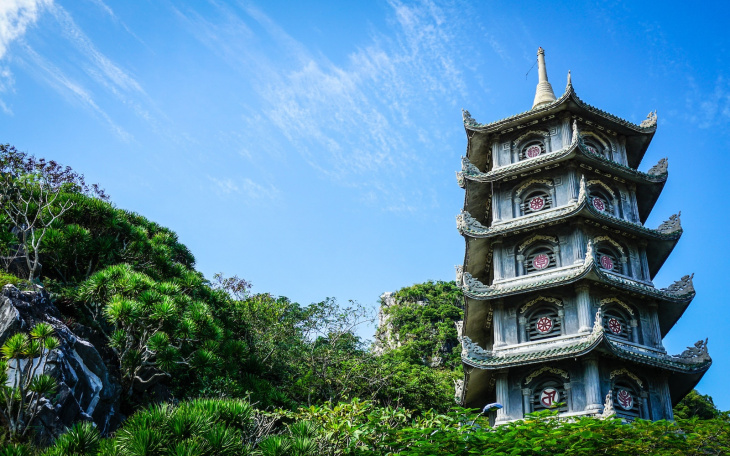
A pagoda at the Marble Mountains. Photo: katiebordner
Of the five mountains that make up the Marble Mountains cluster, only Mount Thuy is accessible to visitors. Guests must pay a nominal entrance fee, after which, they have their choice of how they wish to proceed. A modern glass elevator offers the easiest way to reach the upper levels, but for the adventurous type, there is a 156 step staircase with some sights to see along the way.
Waiting up top are a number of temples, pagodas, and shrines. Just off the elevator, you have easy access to the Ling Ung Pagoda and Temple, which is an impressive feat of construction built back in 1825. You can also visit the multi-tiered Xa Loi Tower or the ancient-yet-newly-reconstructed TamThai Pagoda, which was alternately destroyed and rebuilt for the past 400 years.
Perhaps the primary reason people come to Mount Thuy is to take in the view from its summit, reachable via a narrow footpath. From this vantage point, you can look out at the growing skyline of Da Nang to the north, the sandy sliver of China Beach to the east, the topaz-colored buildings of Hoi An to the south, and the impressive mountains of Vietnam’s interior directly to the west.

Chua Tam Thai Buddhist Temple. Photo: Shawn Harquail
The flatness of the surrounding topography really comes in handy from this position, with views as far as the eye can see. Furthermore, while visiting, make sure to reach the top where the caves are located.
Huyen Khong Cave is a massive grotto that houses a giant marble Buddha, two Buddhist shrines, and a small temple. The atmosphere is evocative with shafts of light penetrating the ceiling at certain times of day and the pervasive smoke and scent of burning incense rods.
Heaven Cave, also known as Van Thong, houses another shrine along with a series of chambers that lead out to another overlook, which though not as impressive as the one at the summit, will likely be less crowded.
Activities
Wherever there are mountains, there are sure to be those who wish to ascend and descend them, and the Marble Mountains are no exception. Organized tours arrange for rock climbing and abseiling for the more adventurous, providing guides, training, and equipment for all levels of experience.
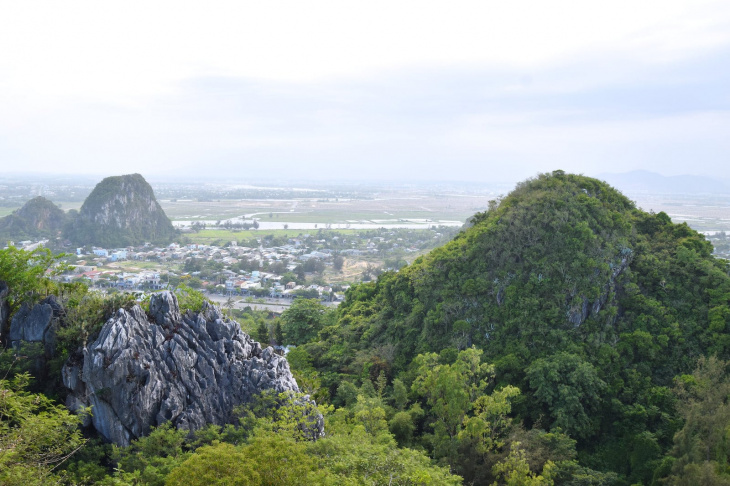
The Marble Mountains. Photo: Raita Futo
At the base of the Marble Mountains is the tiny hamlet of Non Nuoc, where there are a plethora of artisanal shops. While the marble that they use is sourced from other areas, the ornate and intricate statues, figurines, and other marble carvings are true works of art and make for great souvenirs.
When to Visit
The Marble Mountains can be visited year-round, but there are two factors that you should consider: the season and time of day. While the summer months are the busiest, despite the heat, the rainy season, which is typically from September to November, can have overcast skies that might limit the views and slippery marble steps. The dry season is typically cooler and clearer.
The other factor to consider is the time of day. With a convenient location near the city and along the route to nearby tourist attractions, visiting the mountains in the middle of the day might mean contending with crowds as well as higher temperatures. Coming at 7 AM or after 4 PM will not only allow you to avoid lines and heat but also find some of the best natural lighting for photos.
Sentinels by the Sea
Central Vietnam is home to some of the most amazing natural and historic sites in the country and deserves at least a week of exploration to just scratch the surface. The Marble Mountains should definitely be on your itinerary and will leave visitors pleased that they stopped to experience these towering sentinels by the sea!
Details
Address: 81 Huyền Trân Công Chúa, Hoà Hải, Ngũ Hành Sơn, Da Nang, Vietnam
Phone: +84 236 3961 114
Season: Year-Round | Visit early or late to avoid crowds
Website: nguhanhson.org
Đăng bởi: Dũng Nguyễn


